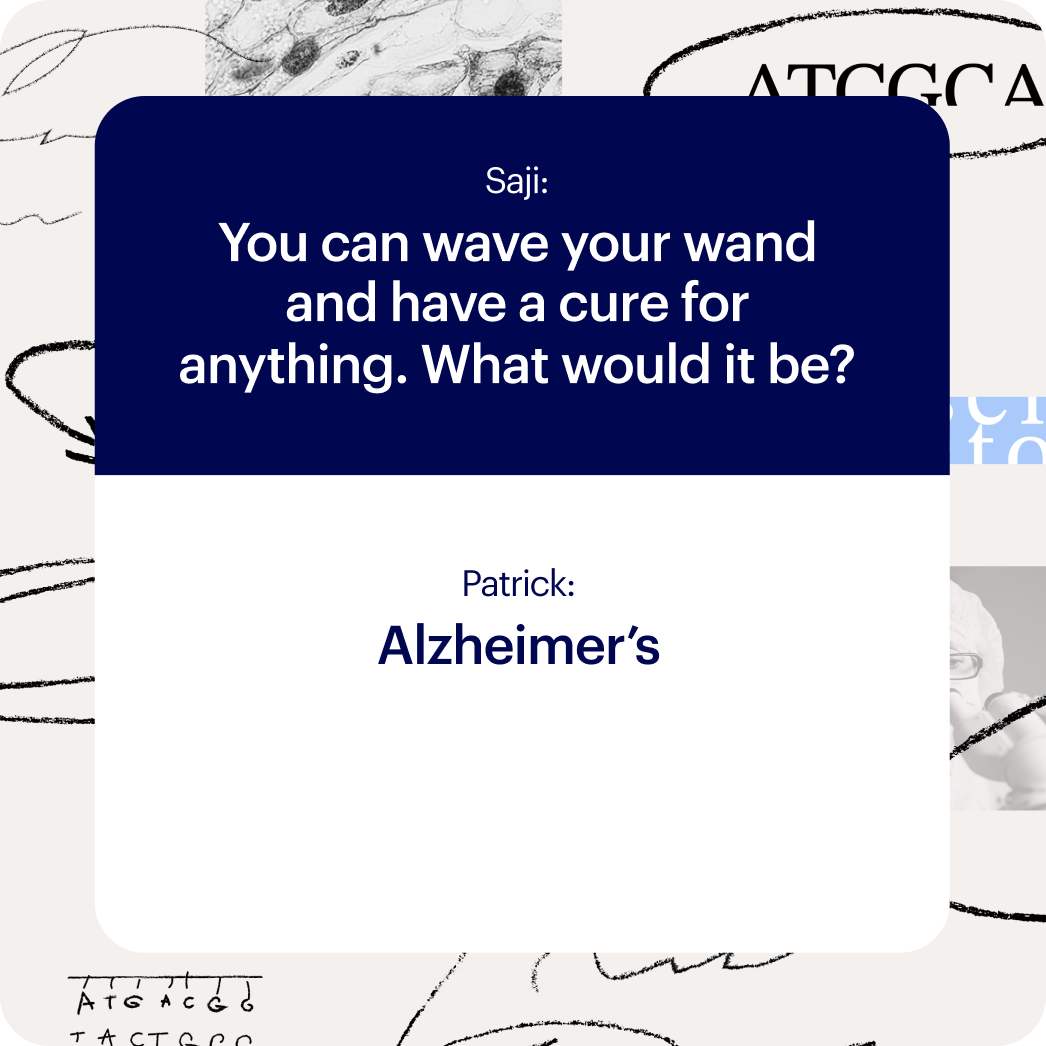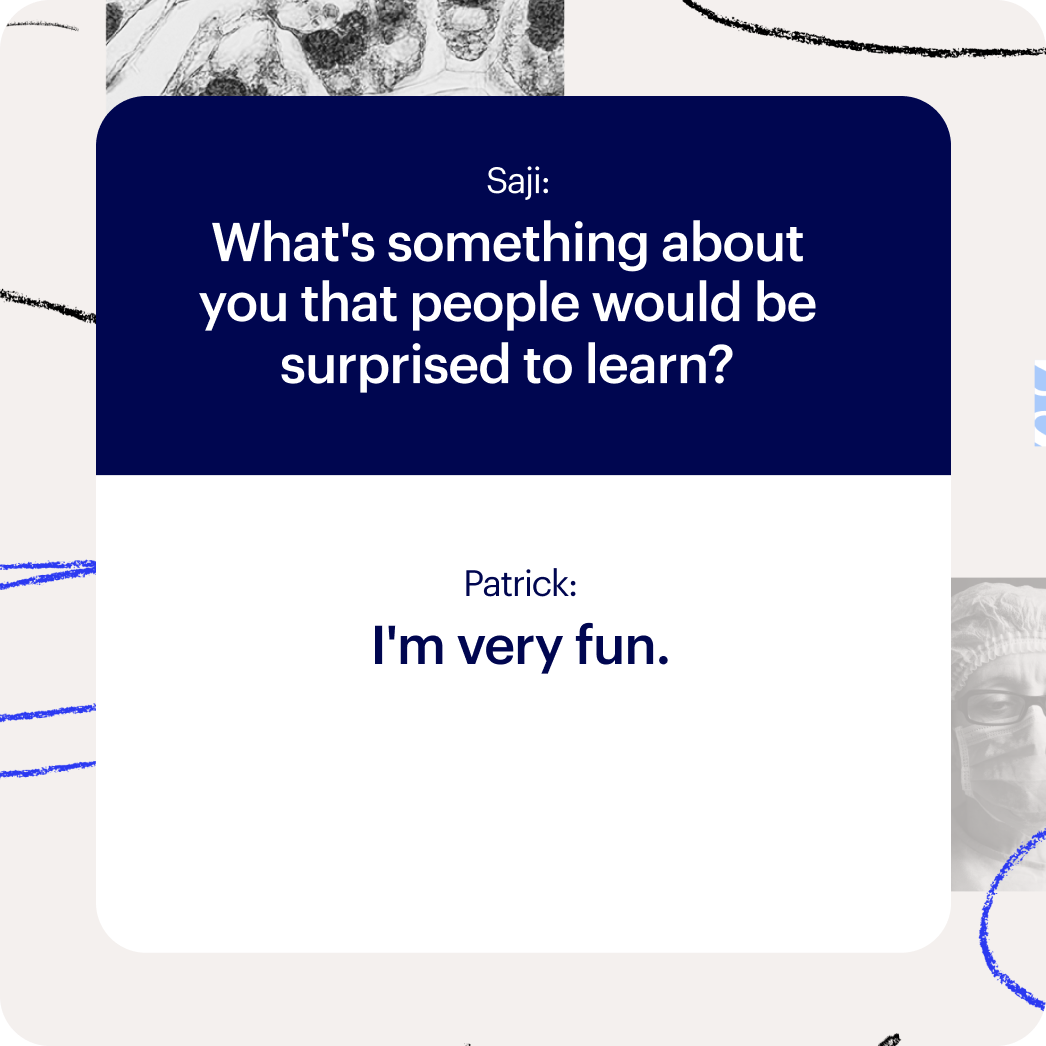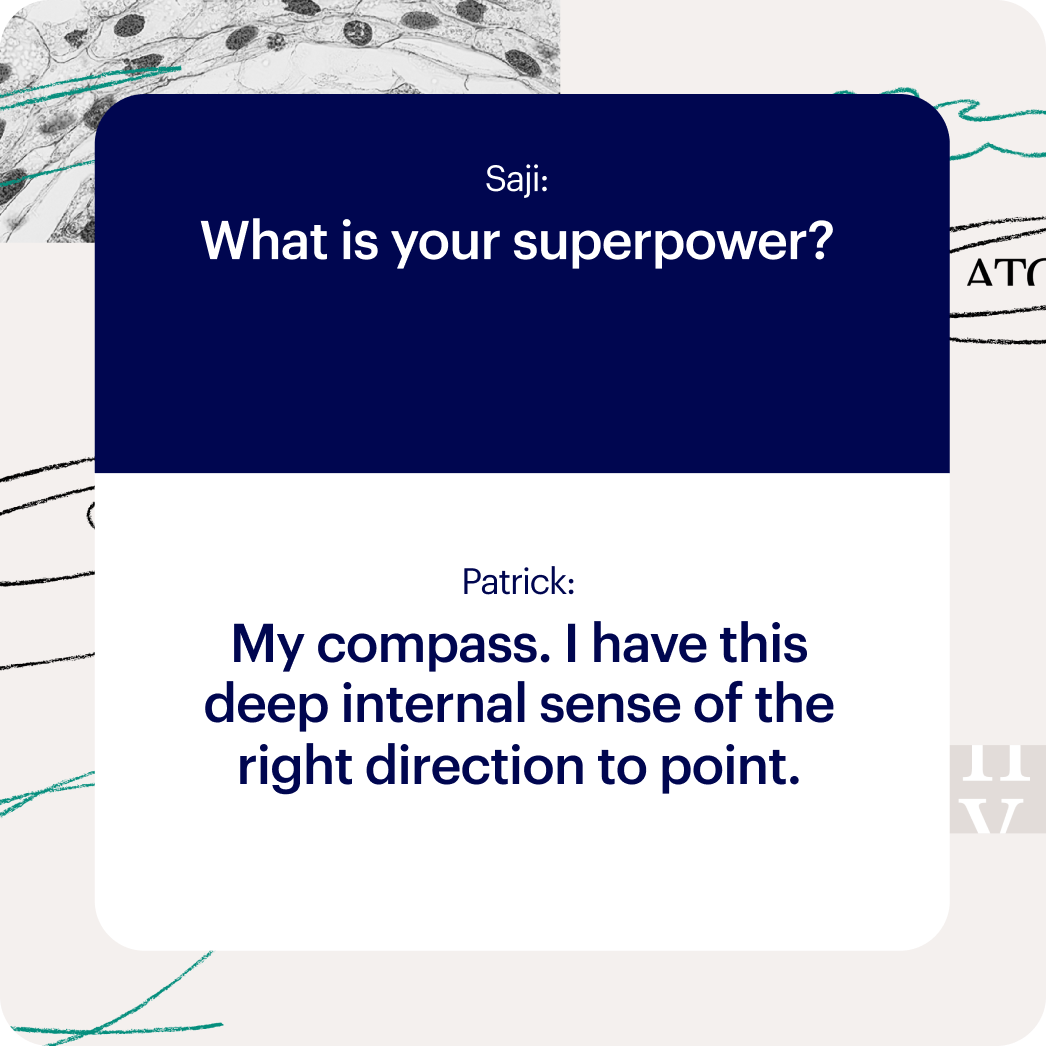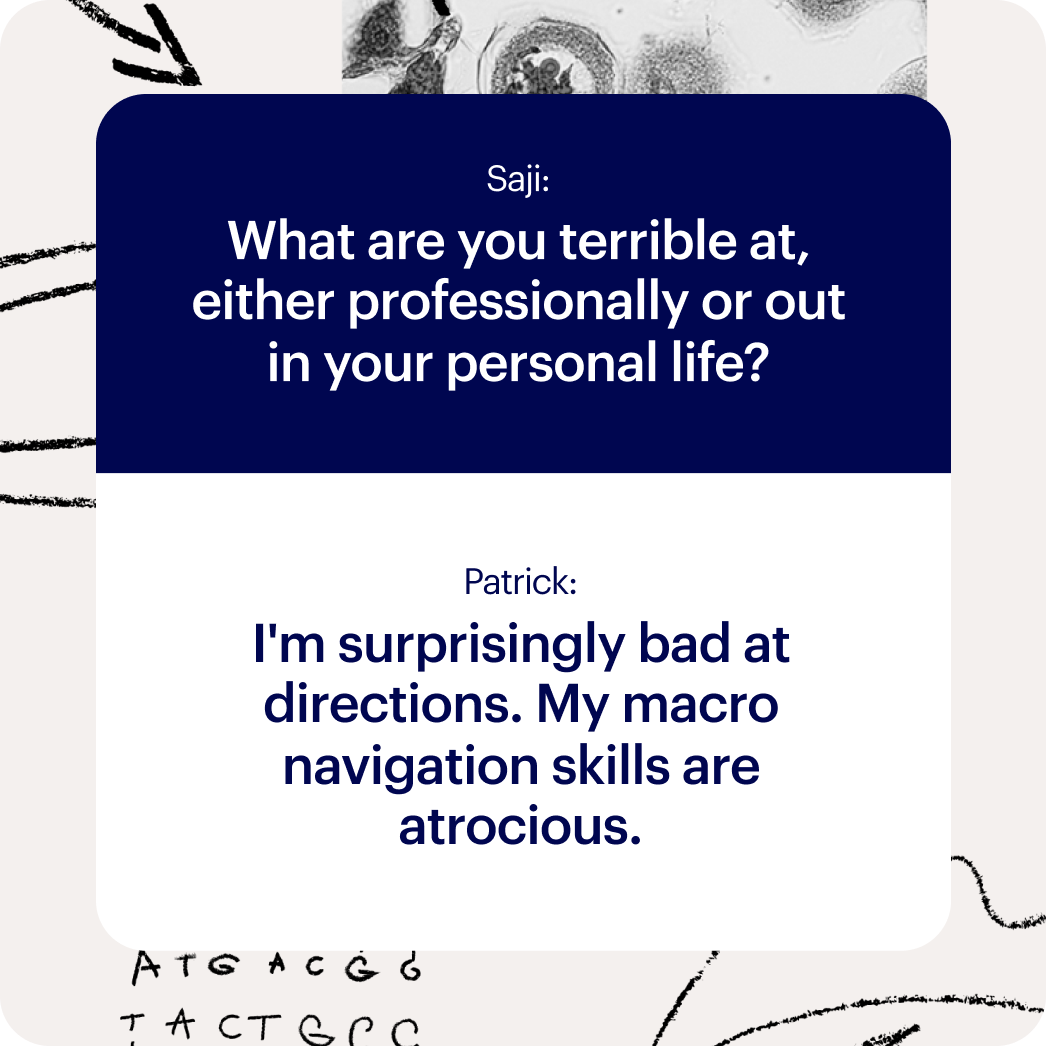In the last 15 years, Patrick Hsu has gone from pioneering CRISPR-Cas9 for genome editing, to starting his own lab and co-founding Arc Institute, all while launching several companies, making fundamental discoveries, and delivering one of the world’s largest open-source ML models.
Patrick joined me to reflect on the early days of CRISPR, the power of mentorship, and how AI and open science will reshape the future of research. — Sajith Wickramasekara
* Editor’s note: The conversation has been edited for length and clarity.
Realizing how big CRISPR would become
Sajith Wickramasekara: When I met you, you were a grad student in Feng Zhang's lab, working on CRISPR genome editing. Do you remember a singular moment when it became obvious that CRISPR would have such a far-reaching impact?
Patrick Hsu: The first moment was when it saved my PhD.
Sajith: Was your PhD not going well? I find that very hard to believe.
Patrick: I had spent two years on TAL [transcription activator-like] effectors, which was the previous genome editing technology. It was pretty painful, so I was a deep believer in CRISPR from the beginning — mostly because I could go from doing these multi-hour Golden Gate assemblies until 2 AM every day, to just ordering an oligo.
Seeing how well CRISPR worked in the lab was a big unlock. I thought, “Wow, this is something that's going to be rapidly adopted.”
Sajith: What was the second moment?
Patrick: I was invited to give a talk at Harvard Medical School. It was 2013, and people were starting to talk about CRISPR at the water cooler. I wasn’t part of these conversations — I was in lab building this stuff.
“I went to give the talk, and the room was so packed that they had to call the fire marshal. At first, I thought I was in the wrong room. But that's when I realized that people cared.”
Sajith: Was the uptake of CRISPR as rapid as you expected?
Patrick: I don't think I expected it. After we published each paper, we had to create an assembly line in the lab, where we’d furiously aliquot a bunch of plasmids and package them for UPS. There were hundreds of requests coming in every week.
This was before Addgene; we had to actually mail things out of our own grants, to get these plasmids in people's hands. That was fun.
Why Feng Zhang’s lab is so high-impact
Sajith: The Zhang Lab is known for being incredibly prolific, and for pursuing big ideas that have spawned successful biotechs. That’s more than happenstance. Can you tell me about Feng's management style?
Patrick: I’ll tell you two things that I noticed.
The first was that in the lab, there was a two or four liter beaker on each bench. And that's where you're supposed to put your pipette tips. In the lab I had just come from, we had tiny biohazard bags (maybe the size of my palm) for your tips. That was the first sign: this vibe of productivity.
“I was basically seeing this 10-100x increase, subliminally, in the output that you're expected to produce experimentally. That was the energy that oozed in the lab."
Sajith: Did Feng ever make it explicit?
Patrick: Never. Those were just the signs that I was interpreting like I was on a field trip, anthropologically. Signs that this place might be a little different — little did I know.
I don't know if people know this, but Feng actually did a lot of bench work. In fact, he did almost as much bench work as his students, at least in the first few years of the lab, which is kind of scary because he was doing all these other things — like being a PI, teaching a class, writing 25 grants in his first year, and publishing all these papers.
I hope Feng won't mind me telling this story: I remember one night, it was 1 AM, and I was like, “You see me more than your wife.” He looked at me — Feng is very patient — smiles and says, “She understands.”
Sajith: Some labs develop an unhealthy, competitive dynamic among students — but the Zhang Lab always struck me as a supportive, productive environment. How did Feng encourage collaboration?
Patrick: I've long felt that science publishing could easily fix the co-first author model: make it very clear that these are equal contributions, because that will incentivize a lot more collaboration.
The way we did it in the lab was a case of convergent evolution. The field was extremely fast paced: exciting, but also quite stressful.
In order to survive and make sure that your project was executed on time, folks would work in small teams. But you need multiple papers, so that you can switch off on being lead author.
This model doesn't work when there's only one paper to be had. But given the pace and energy of the field, especially in the early days, people would publish not just one, but three to five papers together, which was very unusual.
Then, an even larger team would pile in to help address paper revisions. I didn't realize until later how unique and special that was.
Sajith: Is there anything else Feng did that uniquely cultivated teamwork?
Patrick: Absolutely. He’s one of those generals who leads from the front. He was in the trenches with you, especially in those early days.
Obviously the lab is in a very different place now. But at the time, as a hardworking graduate student, I knew that no matter how hard I was working, Feng was working harder. That really impressed me.
How to spot a breakthrough before it happens
Sajith: You've always been ahead of the curve, when it comes to game-changing technologies in biomedical research — whether that’s CRISPR in the 2010s or AI today. How do you spot these breakthroughs early?
Patrick: Towards the end of graduate school, I was poking around the lab’s Dropbox and happened on this document that I probably wasn’t supposed to have access to.
It was one of the first grants that Feng wrote about CRISPR; he wrote about all of the different applications of this technology, including genetic medicines that would be made possible. I remember reading it and seeing the blueprint of the last four years written in this document, from years past.
Sajith: Wow, so he had the vision.
Patrick: CRISPR was actually the third important technology that Feng had worked on. In his PhD, he co-invented optogenetics with Karl Deisseroth. He was Xiaowei Zhuang's first undergraduate student at Harvard; he had a front row seat to the invention of STORM [stochastic optical reconstruction microscopy], which is super resolution microscopy — another Nobel Prize-winning technology.
Feng had actually seen two fundamental biotechnological advances before his turn as a junior PI to make his own mark. That pretraining allows you to find those patterns.
Sajith: So the answer here is pattern matching and apprenticeship with the greats?
Patrick: These days, I think education is really focused on scaling: How can you give as good of an education to as many people as possible? But graduate school is one of the few bastions of the old world way of doing education. It's still very much like a guild. In order to advance, you need the approbation of your seniors. You have to watch and learn from someone who’s an expert in your field.
There’s clearly a tremendous amount of latent knowledge and ways of attacking and deconstructing a problem that gets transferred. It's your role as a student to learn how to generalize it for your own work. I don't think I could have articulated any of this back then, but I try to be more explicit with my trainees now.
“Graduate school is one of the few bastions of the old world way of doing education. It's still very much like a guild.”
Where the U.S. can’t compete with China — and where it can
Sajith: There's been a lot of talk lately of Chinese biotechs, and how they've been able to reduce their cost basis and develop drugs faster. How do we lower the cost basis in the rest of the world?
Patrick: I went to China last year to check it out. First, the capabilities are incredible, and they're very real.
A friend of mine runs one of the largest CDMOs [contract development and manufacturing organizations] in China. They wanted to become the largest CDMO, so they hired a bunch of managers from a competitor company that they wanted to emulate.
After a few months, the new managers came to talk to the CEO, and they said, “We need to talk about working hours.”
The CEO says, “We work 9-9-6. We’re doing good, right?” [Editor’s note: 9am-9pm, 6 days per week]
The manager says, “No. At the other company, we worked until 11pm every night.”
“That just gives you a sense of what we're up against in China. They're hungrier, they’re vertically integrated, their cost basis is lower, and they're playing to their strengths.”
Our strengths here are different; they’re not working 9-9-6 or 9-11-7. Our strengths are not biomanufacturing. We can try to onshore biologics manufacturing, but I think that's probably not where America will find the most alpha. I think we're strong at innovation.
Sajith: Could AI and machine learning be part of that for American science?
Patrick: It's a reasonable hope that AI will bring down certain cost bases for drug discovery significantly. I think virtual cells will be able to do this.
If we’re able to make models of cells or tissue response that can actually do in silico target ID and toxicity — that's what we need to lean into. We need to lean into our ability to generate unique proprietary datasets that are actually fit for model training.
We need to train and evaluate models effectively to increase the industry’s probability of success. Even a 2x increase to 20% probability of success (which still sounds low) would transform drug development and early-stage investment.
How AI will transform the industry — and what’s still missing
Sajith: Which parts of R&D are best suited for AI today? And where do you think the industry will get the quickest ROI first?
Patrick: I think faculty in the academic setting are using AI to help them write grants.
Sajith: Are the grant reviewers also using AI to read the grants?
Patrick: It’s funny you say that, because I recently received a review for a paper I submitted, at an unnamed, high-profile journal, that was clearly written by AI — lots of em dashes and highly organized subheaders. It was very verbose, which is another sign.
Sajith: Was it a good review?
Patrick: It was like a denial of peer review service attack. I imagine the prompt was “give me something that'll take them as long as possible to do.”
But to answer your question, I think models will be really effective for the regulatory sciences. Hopefully, we can streamline and improve the bureaucracy of the regulatory process.
Lots of folks are focused on de novo design and making a trillion molecules — but you have to remember development. One interesting question is, will we really have predictive models of toxicity? If we can do it, that’s basically a model of all biology.
You’d need to predict how different cells will respond to a drug, how different tissues will respond, and then how they'll actually interact in order to give you systemic toxicity. It's one thing to be able to predict whether certain liver markers will go up — that's narrowly fine. But actual tox modeling is the holy grail.
Sajith: You’ve said before that AI for biology is somewhere between GPT-1 and GPT-4. How do we get to a higher level of maturity?
Patrick: Biology is really complicated. It's hard to even read the papers in the first place.
Sajith: Now we have ChatGPT to help us read the papers.
Patrick: But it doesn't do a good enough job. It gets you to 70% understanding, but it consistently falls short.
In fact, when you ask the latest models, “What are the most important breakthroughs that will happen in the life sciences in the next decade?” it actually gives you incredibly boring answers. That's my hot take for the day — they're missing this gestalt somehow.
To be clear, I'm very positive about AI and science. I think agents are going to clearly automate all bioinformatics. And once we can connect the robots to do agentic lab-in-the-loop, it just feels obvious.
Sajith: People often criticize AI models for hallucinating, but you’ve said that these hallucinations could drive scientific progress, much like the creative process in science. Can you elaborate?
Patrick: When I think about how I ideate, the best people are doing high-temperature inference to generate ideas. They're playing with concepts that cross boundaries, or they're extracting deep insights from a subtle data pattern that no one else sees.
Just like when someone in a lab meeting asks a super insightful question — one that afterwards seems really obvious, but no one thought of beforehand.
“That's what the biggest discoveries are – they're actually very obvious. In order to have a big impact, it needs to solve something that everybody wants.”
Just look at the tools that everybody uses, whether that's BLAST for sequence alignment, CRISPR for gene editing, or AlphaFold for structure prediction. Hopefully one day, folks are using virtual cell and digital twin models.
To get back to your question, I think hallucination is taking all of these ideas that are jumbled in your latent space and pulling them into token space. Initially, the ideas sound crazy, but when you shape them in the right way, it actually becomes a banger discovery.
Why everyone wins with open science
Sajith: I'd be remiss not to mention Evo 2. It's the largest ML model for biology, trained on 9.3 trillion nucleotides from over 128K whole genomes — congratulations. What motivated you to make it totally open source?
Patrick: There are lots of “open source” models that aren't truly open source. They might release the weights, but don’t release the training data, the training infrastructure, or the inference stack that's used to operate the model. That’s actually where I think these companies find their alpha: in the training data or post-training strategy.
What we tried to do with Evo 2 was to make everything open. The pre-training data is online; the pre-training infra is on our GitHub; the model is on Hugging Face. Folks can use it fully openly for scientific research.
“Training large models with tens of billions of parameters isn’t easily accessible. We wanted to provide that for people, using battle-tested infrastructure.”
There also aren't that many folks training large biology models. Why? Part of it is GPU access, but an even more serious part is the lack of machine learning engineers and the infrastructure to make these models.
Sajith: So you hope to kick-start something in the industry, so people can build off what you've done.
Patrick: There should be more models of biology. We want more.
Sajith: What about Arc’s new Virtual Cell Atlas? It's the largest open source resource for single cell transcriptomic data, incorporating data from over 300 million unique cells — congrats again. Is more data the answer?
Patrick: One of the interesting things about the culture of the life sciences industry is that everyone's obsessed with their data.
“Every biotech company says their data is special — and it’s why their model will be better. I'm a little concerned by how much this culture is being directly ported into the AI bio culture. It’s really important that as a community, we try to break it because otherwise, we're going to be deeply subscale on all of the data assets that we need for anyone to succeed at all.”
People are playing these local optimization games [keeping data proprietary for their own models] — but the global optimization is that we break biology open and that we do so in an open science federated approach in order to actually win. If the models work, then everyone will win.
Because, fundamentally, people don't want to be doing experiments at the basic level that’s happening today. We want to be able to program, manipulate, and model biology at higher levels of abstraction.
Building products that people actually want
Sajith: You work at the intersection of AI, life sciences, and tech — what can biotech learn from tech companies?
Patrick: Tech companies are classic businesses: you need to make something that people want, and you need to, crazily, make money. This is actually very different from how a biotech company gets built.
A lot of researchers don't really think about a product. They think about publications and technology. There's much less of a sense of product.
Look at GLP-1s [glucagon-like peptide-1], which have created more value than all biotech startups combined over the last 30 years. That’s crazy. If you think about it, it actually falls out of the simplicity of the product. I think pharma could be spending more of their R&D budget on these very asymmetric bets than they are today.
“From a product and application point of view, at Arc we spend a lot of time thinking about how fundamental discoveries and insights get out of the lab — so they don't end up as Nature or Science papers, but actually help people in the real world.”
On starting college at 15 — and a lab at 22
Sajith: Let’s talk about your background. You started college at 15 and started your own lab at 22, when most scientists don’t until their mid-30s. Since then, you’ve made seminal discoveries and launched several companies. What drew you so early to science and technology?
Patrick: I started working in a proper university wet lab when I was 14. Two weeks in, I knew I loved it.
Sajith: How does a 14 year old end up in a lab?
Patrick: You beg. I was homeschooled until college, so I grew up in this habit of finding interesting projects. I emailed 50 professors at the local university, 49 of whom ignored me. One of them said yes. So I showed up and just stuck with it. I wasn't smart enough to leave.
I was having so much fun — and that's really what I've gravitated towards. Everything that I've done since is just some self-expression of enjoyment.
Sajith: Your brother Andrew is the cofounder of an AI startup, and known for starting college at 12. How much has homeschooling shaped both your successes?
Patrick: Probably a lot, I'll use my AI therapist to unpack it someday. I think it taught me a lot of independence.
When you're going through it, you don’t actually know how unusual it is. It’s just normal for you.
Sajith: Was it in college when you realized something was a little different?
Patrick: I definitely knew before then, but it's one thing to intellectually know something, and it's another to feel it emotionally and socially. When you're half the size of everybody else, it's pretty clear something's wrong. But you're also used to that.
“Probably a lot of what I've done since then comes from learning, very early in life, that I can be comfortable and survive in environments where I’m outside the crowd.”
Sajith: If you were starting grad school again today, what advice would you give yourself?
Patrick: The first thing that I've learned in research, which is extremely surprising and puzzling, is that the amount of effort and time it takes to solve a high-impact problem and low-impact problem are pretty similar.
Sajith: This is like what people say about starting a company with a really big ambitious mission versus a company with a smaller, less ambitious mission.
Patrick: They’re equally hard — so pick the high-impact problem.








